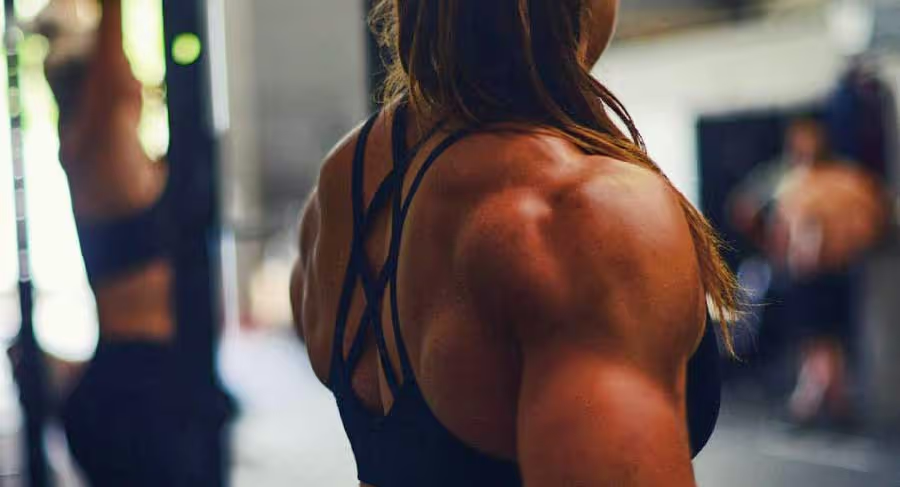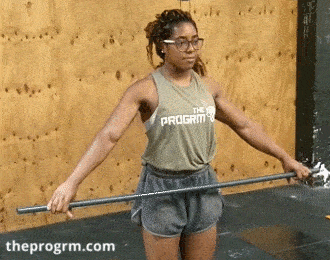Shoulder Mobility for CrossFit Athletes
Did you know that shoulder mobility is the secret ingredient that fuels CrossFit greatness? It's the key to proper technique, injury prevention, increased range



Did you know that shoulder mobility is the secret ingredient that fuels CrossFit greatness? It's the key to proper technique, injury prevention, increased range


Did you know that shoulder mobility is the secret ingredient that fuels CrossFit greatness?
It's the key to proper technique, injury prevention, increased range of motion, and optimal performance.
Without it, you'll be held back by tightness and limited mobility, hindering your progress.
We often think that making the muscles around our shoulders stronger is the key, so we do a lot of exercises like presses and dips.
In fact, being strong often results in being less flexible.
Performing a lot of presses and dips doesn't necessarily help our ability to stabilise a bar overhead or execute smooth shoulder rotations. We need our shoulder to move well.
By prioritizing shoulder mobility, you'll perfect your form, reduce the risk of injuries, expand your range of motion, and unleash your true potential. Here are some ways that this seemingly small piece of the puzzle can make a monumental difference in your performance:
View this post on Instagram
A post shared by The Progrm (@theprogrm)
For more content like this, follow @theprogrm on Instagram!
Now that we've established the significance of shoulder mobility in CrossFit, you might be wondering how to achieve it..
If proper function and the longevity of your shoulders is important to you, (as it should be!), here are a few exercises to optimize shoulder health.
Incorporate them into your training as part of your warmup or as at the end of your session as accessory work.
This is a great exercise to reinforce correct movement of the scapula when you lift weight overhead.
Wall slides are also useful for correcting excessive lumbar extension which is a typical fault seen in overhead lifts.
This drill requires zero material which means it can be performed in the gym or as a corrective exercise at home.
How to do it:

This exercise can be made easier by separating your feet further from the wall or performing it while seated against the wall.
Work up to sets of 10 reps.

The banded pull apart is a straightforward stability exercise that trains your traps, delts, rhomboids, and rotator cuffs.
There are so many versions of this exercise that it is hard to keep track!
The variation explained below focuses on working external rotation of the shoulder.
How to do it:

Hold for a moment before slowly returning to start position. Work in sets of 10-20 reps.
Another scapular stability exercise with a little more emphasis on thoracic spine mobility.
This drill important for building postural strength and it's also a good way to test your shoulders range of motion.
How to do it:
Lay on your stomach with your feet together and your hands resting on your lower back with palms pointed toward the ceiling. Tuck your hips and your ribs in to maintain a neutral position for your core and head.
Squeeze and depress your shoulder blades together and lift your hands so they hover over your lower back.
With your palms still facing upwards, carefully straighten your arms, extending them out to your sides. Continue to raise your arms out to the sides and begin rotate at the shoulders so that your palms face the ground.
Continue to rotate your shoulders and raise your arms until your arms are extended on an “overhead position” (arms beside your ears) and your thumbs point towards the ceiling. Return to the starting position in the same way.

For an additional stretch for you upper and mid-spine, perform this exercise while squeezing your glutes and lumbar to keep your chest elevated above the ground.
Work in sets of 5 to 10 reps.
Also known as PVC Passthroughs, this drill is one of the best-known shoulder mobilizers however it's commonly performed either incorrectly or half-heartedly.
When done effectively, dislocations can be helpful for opening the chest and front shoulders which are typically over developed from performing a lot of pressing movements.
How to do it:

Perform sets of 10 to 15 smooth reps without forcing full rotation of the arms.
Conclusion
In a sport that is nearly synonymous with shoulder injury, it is vital that CrossFit athletes take an extra step to care for their joints.
Shoulders, being one of the most mobile joints in the body should receive additional care if you expect to frequently perform high volume, high intensity exercise.
In return for strengthening and mobilizing your shoulders, you'll lower your risk of injury and find that many movements will become considerably more manageable.
The best defence for longevity in functional training is bulletproof shoulders.